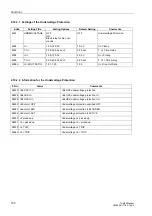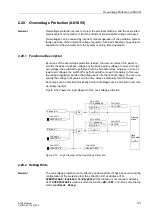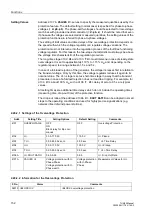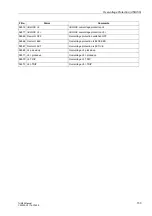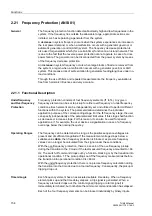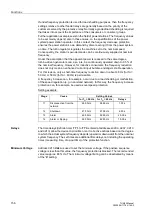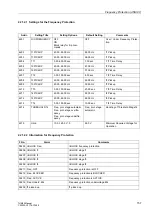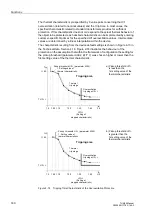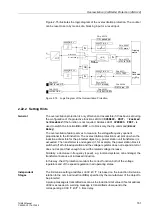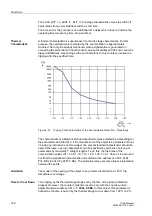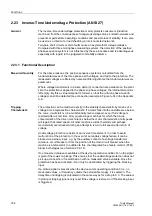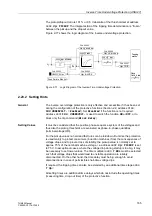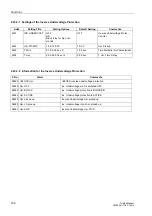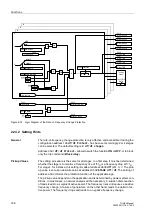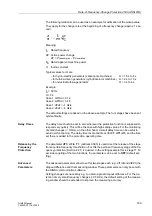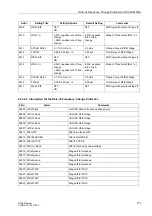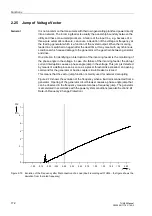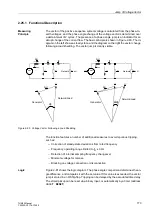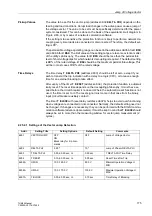
Functions
164
7UM62 Manual
C53000-G1176-C149-3
2.23
Inverse-Time Undervoltage Protection (ANSI 27)
General
The inverse-time undervoltage protection mainly protects consumers (induction
machines) from the consequences of dangerous voltage drops in island networks and
prevents impermissible operating conditions and possible loss of stability. It can also
be used as a criterion for load shedding in interconnected networks.
Two-pole short circuits or earth faults cause an asymmetrical voltage collapse.
Compared with three monophase measuring systems, the detection of the positive
phase-sequence system is not influenced by these procedures and is advantageous
especially with regard to the judgement of stability problems.
2.23.1 Functional Description
Measured Quantity
For the above reasons, the positive sequence system is calculated from the
fundamental waves of the three phase-earth voltages, and fed to the protection. The
measured voltages are filtered by numerical filter algorithms; the fundamental wave is
paramount.
Where voltage transformers in broken delta (V) connection are available on the plant
side, the protection is applied to the phase-to-phase voltages; the internal starpoint is
left empty. By this a virtual starpoint is formed, so that the (virtual) phase-to-earth
voltages can still be detected (see connection example in Figure A-34 in the Appendix
A.4).
Tripping
Characteristic
The protection can be matched exactly to the stability characteristic by means of a
voltage-time integral-action characteristic. If a motor falls into the unstable area below
the curve, it will stall or run at substantially reduced speed, even if full voltage is
restored after a short time. Only squirrel-cage machines for which the torque
characteristic of the driven machine lies below the motor characteristic at all speeds
will regain their rated speed. All other machines will be thermally and perhaps
mechanically overstressed during an attempt to return to full speed after return of
voltage.
Undervoltage protection consists of an inverse time element. In order to avoid
malfunction of the protection in the event of secondary voltage failure, it can be
blocked via a binary input, e.g. by the auxiliary contact of a voltage transformer
miniature circuit breaker or from the position of the main circuit breaker when the
machine is at stand-still. In addition to this, the integrated fuse failure monitor (FFM)
blocks both stages (see Section 2.38.1.4).
If no measured values are available at the device (operation condition 0), no trip signal
is given if there was no pickup. This ensures that the undervoltage protection does not
pick up at once when it is switched on with no measured value available. Once the
protection has been activated, it can only be deactivated by triggering the blocking
input.
If a pickup signal is present when the device enters operating condition 0 (i.e. no
measured values, or frequency outside the permissible range), it is sealed in. The
delay time until tripping is calculated in the same way as for a drop to 0 V. The sealed-
in pickup or tripping signal is only reset if the voltage is restored, or if the blocking input
is triggered.

